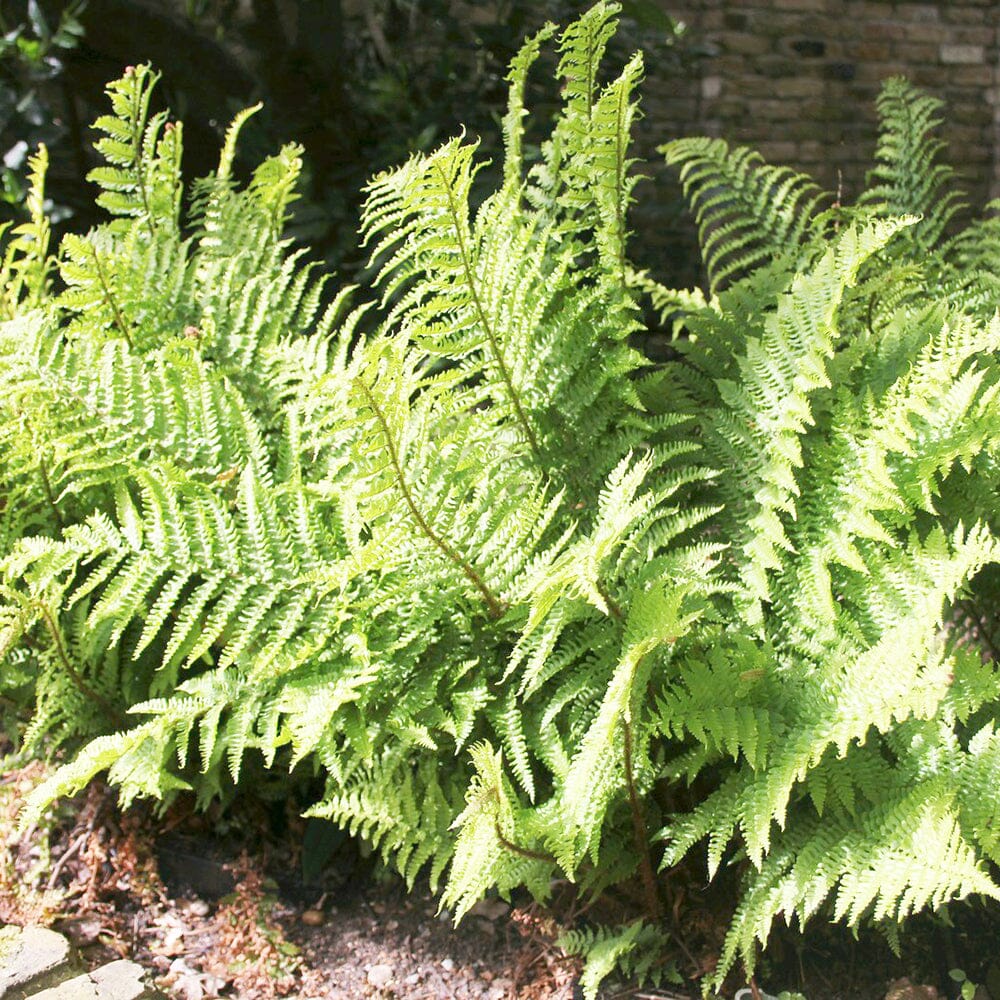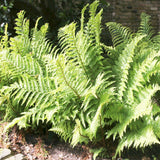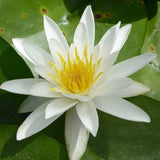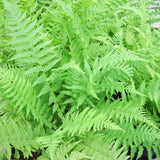Dryopteris Filix-Mas Aquatic Pond Plant - Male Fern
Dryopteris filix-mas, commonly known as the Male Fern, is a robust and hardy fern species native to Europe, Asia, and North America. It is appreciated for its attractive foliage and ability to thrive in various conditions. Here's a detailed description and care guide for Dryopteris filix-mas:
Description:
Dryopteris filix-mas is a medium to large-sized fern that typically grows to a height of 2 to 3 feet (60 to 90 cm) and spreads through a clumping habit. It features upright, arching fronds that emerge from a central crown or base. The fronds are pinnate, meaning they are divided into numerous leaflets called pinnae. The pinnae have a feathery appearance and are a vibrant, glossy green color. The fronds create an attractive and lush display, adding depth and texture to shaded garden areas.
Care Guide:
Lighting: Dryopteris filix-mas thrives in partial shade to full shade. It tolerates less light than some other fern species and can even grow in deep shade. While it can tolerate some morning sun or filtered sunlight, it is best to avoid prolonged exposure to direct sunlight, as it can scorch the fronds.
Soil: This fern prefers moist, well-draining soil that is rich in organic matter. It can adapt to various soil types, including loam, sandy soil, or clay. Ensure the soil retains moisture without becoming waterlogged. Adding organic compost or leaf mulch to the soil improves its fertility and moisture-retention capabilities.
Watering: Male Ferns appreciate consistent moisture to thrive. Keep the soil evenly moist, but not waterlogged. Water thoroughly whenever the top inch (2.5 cm) of soil feels dry. Adjust the frequency based on the climate and humidity levels of your region.
Humidity: Dryopteris filix-mas can tolerate average humidity levels. However, it appreciates moderate to high humidity. If the air in your home or growing area is dry, you can increase humidity by placing a tray of water near the fern or using a humidifier. Misting the fronds with water occasionally also helps to maintain humidity.
Fertilization: Male Ferns are not heavy feeders. However, applying a balanced liquid fertilizer or a slow-release granular fertilizer formulated for ferns during the growing season can promote healthy growth. Follow the instructions on the packaging for the appropriate dosage and frequency.
Mulching: Apply a layer of organic mulch around the base of the fern to help retain moisture, suppress weed growth, and provide insulation to the roots. Avoid piling mulch against the crown, as it can cause rot.
Pruning: Regular pruning is not necessary for Dryopteris filix-mas. However, you can remove any brown or yellowed fronds to maintain the plant's appearance. Prune damaged or dead fronds at their base. New fronds will emerge from the central crown.
Propagation: Male Ferns can be propagated through division. In early spring, carefully separate the clumps by gently pulling them apart. Ensure each divided section has healthy roots and foliage. Replant the divisions in suitable locations or containers.
Winter Care: Dryopteris filix-mas is generally hardy and can withstand cold temperatures. In regions with severe winters, providing some protection can be beneficial. Apply a layer of mulch around the base of the fern to insulate the roots. In extremely cold regions, you can also cover the plant with a layer of straw or horticultural fleece.
By following these care guidelines, you can enjoy the beauty and resilience of Dryopteris filix-mas in your garden or shaded areas. Adjust the care routine based on your specific growing conditions and monitor the plant for any signs of pests, diseases, or nutrient deficiencies.
Site Selection:
Choose plants that are suitable for the specific growing conditions of your pond, such as sun exposure, soil type, and moisture levels. Consider the mature size of the plants and allow enough space for them to grow without overcrowding. Place taller plants toward the back or center of the planting area and shorter plants toward the front or edges for a balanced and visually appealing arrangement.
Soil Preparation:
Prepare the planting area by removing any weeds, rocks, or debris. Improve the soil's drainage and fertility by incorporating organic matter, such as compost or well-rotted manure. Ensure that the soil is well-drained but retains enough moisture to support plant growth.
Planting:
Dig a hole that is slightly larger than the root ball of the plant. Gently remove the plant from its container and loosen the roots if they are tightly bound. Place the plant in the hole, ensuring that the top of the root ball is level with or slightly above the soil surface. Backfill the hole with soil, firming it gently around the roots to remove air pockets. Water the plant thoroughly after planting to help settle the soil around the roots .
Watering:
Water newly planted plants regularly to keep the soil evenly moist until they establish their root systems. Once established, water the plants as needed, aiming for deep, infrequent watering rather than frequent shallow watering. Monitor soil moisture levels and adjust watering frequency based on weather conditions and plant needs.
Mulching:
Apply a layer of organic mulch, such as shredded bark or compost, around the base of the plants. Mulching helps conserve soil moisture, suppress weed growth, and regulate soil temperature. Leave a small gap between the mulch and the plant stems to prevent moisture-related issues and discourage pests.
Fertilization:
Depending on the nutrient needs of the specific plant species, consider fertilizing annually or as recommended. Use a balanced, slow-release fertilizer or a fertilizer formulated for flowering plants. Follow the manufacturer's instructions for application rates and timing.
Pruning and Maintenance:
Regularly inspect and remove any dead, damaged, or diseased plant parts to promote plant health and appearance. Prune or trim plants as needed to maintain their desired shape and size. Monitor for pests and diseases and take appropriate action if necessary.
Winter Care:
Consider the hardiness of the plants and their ability to withstand winter conditions in your region. Mulch around the base of cold-sensitive plants to protect the roots from freezing temperatures. In colder climates, consider moving potted plants indoors or provide them with appropriate winter protection. Remember to research the specific care requirements of the plants you have chosen, as each species may have unique needs. By providing proper site selection, soil preparation, watering, mulching, fertilization, and maintenance, you can ensure the health and beauty of the plants surrounding your pond.
































